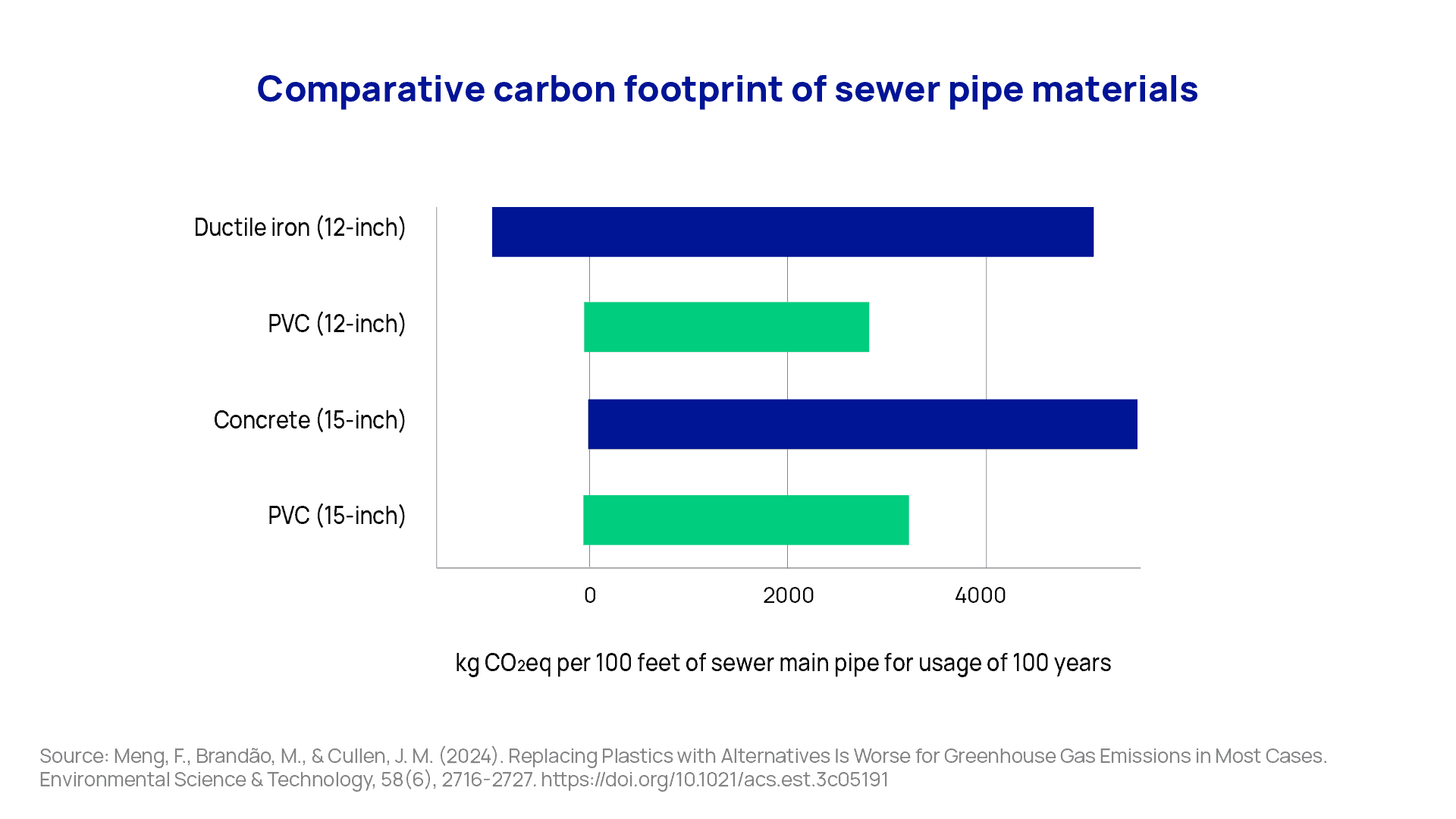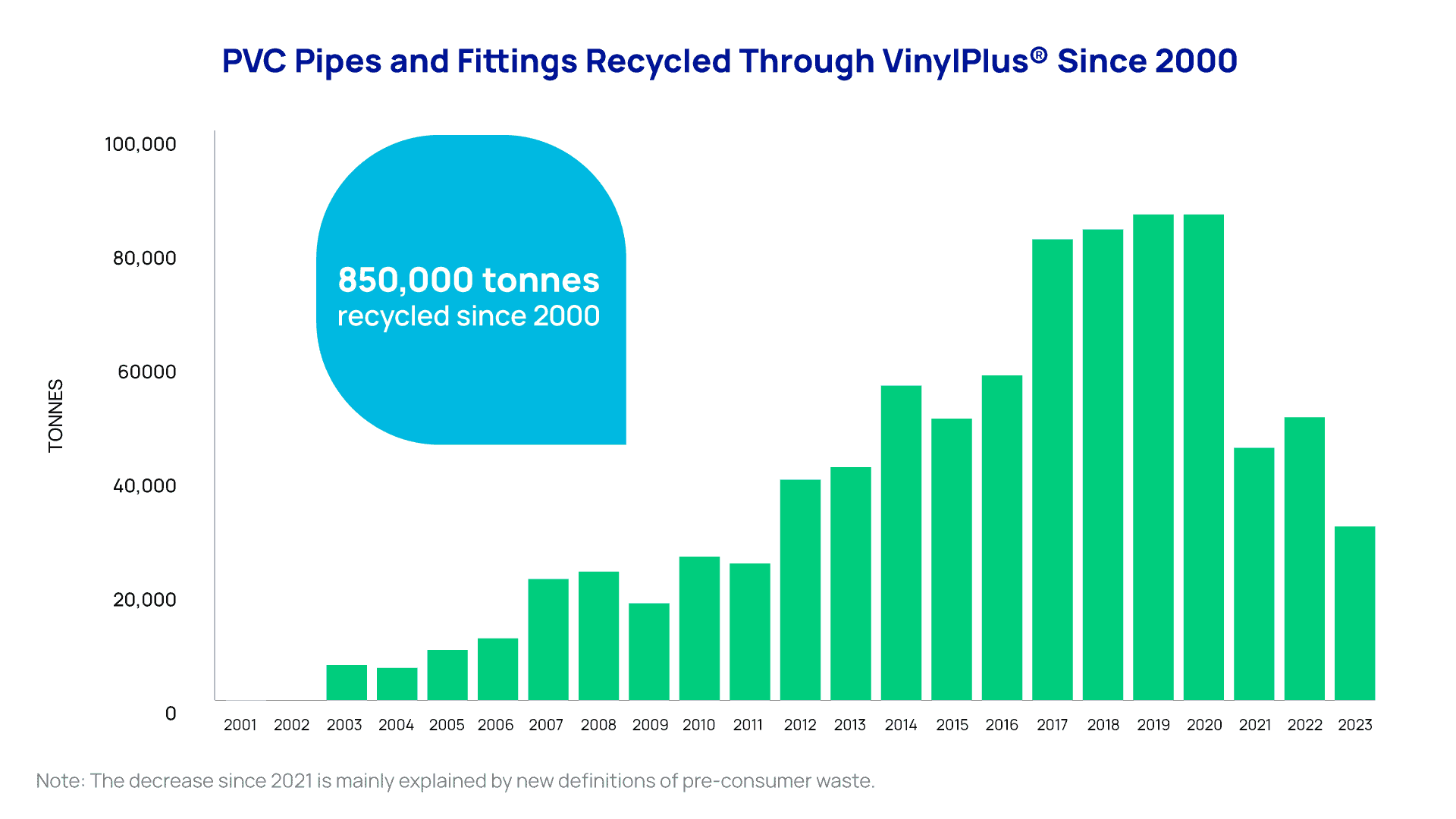PVC pipes are safe
Clean water stands as one of Earth's most invaluable resources. PVC water pipes play a crucial role in preserving the quality of drinking water, thanks to their exceptional inertness and resistance to corrosion, even when exposed to chlorinated disinfectants. This resistance ensures that PVC pipes remain free from bio-film contamination, which can otherwise serve as a breeding ground for bacteria.
Moreover, PVC water pipes and fittings minimise unnecessary water loss from the source to the consumer, thereby enhancing water conservation. By facilitating access to clean water, PVC pipes make a significant contribution to achieving Sustainable Development Goal 6: Clean Water and Sanitation.
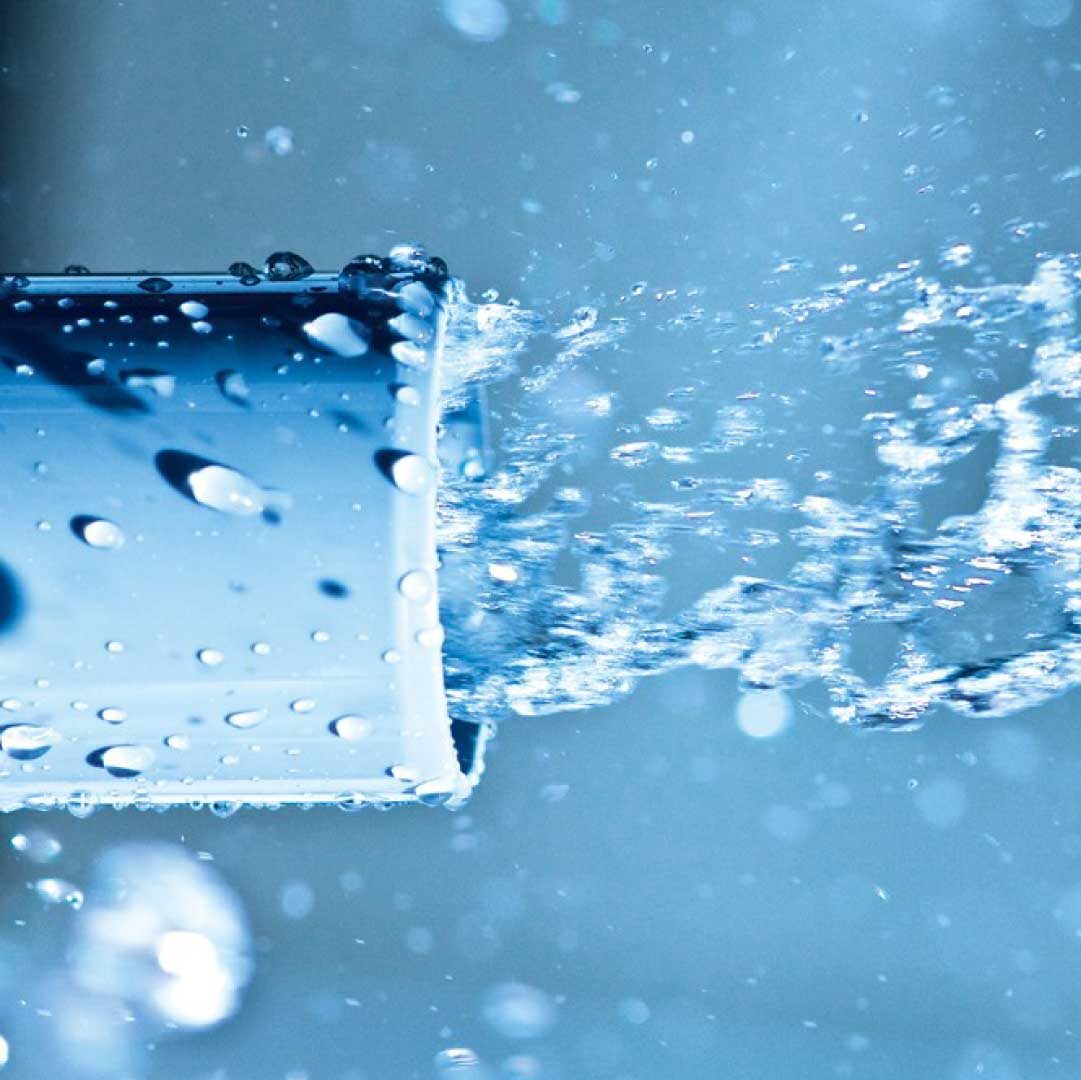
Negligible migration levels
PVC in itself is inert and non-toxic, and recognised as a Polymer of Low Concern by the OECD. Because it is used below its glass transition temperature (80°C), PVC can be considered as a functional barrier preventing any low molecular weight substances to migrate to drinking water. Peer-reviewed research demonstrate migration levels far below the detection limit of the most modern analytical techniques.
Unwanted substances replaced
Through the VinylPlus® framework, the European PVC and piping industry has made a targeted effort to substitute unwanted substances. As a result, replacement of lead-based stabilisers in virgin PVC compounds was completed in 2015.
Strict regulation on substances used in drinking water pipes
The safety of PVC pipe systems for the transportation of drinking water in Europe is tightly regulated. Partly by the REACH regulation on chemical substances, partly by the European Drinking Water Directive and its related standards and national legislations, which only allow the use of positively listed substances.
PVC pipe manufacturers are subject to third-party certification by accredited laboratories and institutes, who subsequently also carry out regular audits to ensure continued compliance.
PVC vs. copper: Corrosion and bacterial growth
Some tout traditional materials such as copper as safer than PVC pipes. Yet research reveal that copper is vulnerable to corrosion, resulting in various health problems. Copper pipes are more prone to the growth of Legionella bacteria, which can cause Legionnaire's disease, compared to PVC pipes. Additionally, the leaching of copper into drinking water has been linked to structural failure and gastrointestinal issues.
PVC pipes are fire safe
In addition to their exceptional performance in maintaining water quality, PVC pipes also exhibit notable fire safety characteristics. PVC is inherently flame retardant due to its high chlorine content of 57%, meaning it is less likely to ignite and contribute to the spread of fire. Further, PVC is comparable to most commercial materials in terms of smoke toxicity and does not pose a greater risk of fume generation during fires than other organic polymers.
European PVC manufacturing is safe
The production of PVC in Europe is tightly regulated, with strict adherence to EU Occupational Exposure Limits and Best Available Techniques (BAT) reference documents, among other regulations. The industry also follows its own guidelines that go beyond regulatory requirements.
The safe nature of PVC production in Europe has been confirmed by the European Chemicals Agency in 2023, which states that "the risks from PVC resin to workers and the environment are considered adequately controlled with the current operational conditions and companies’ safety measures."
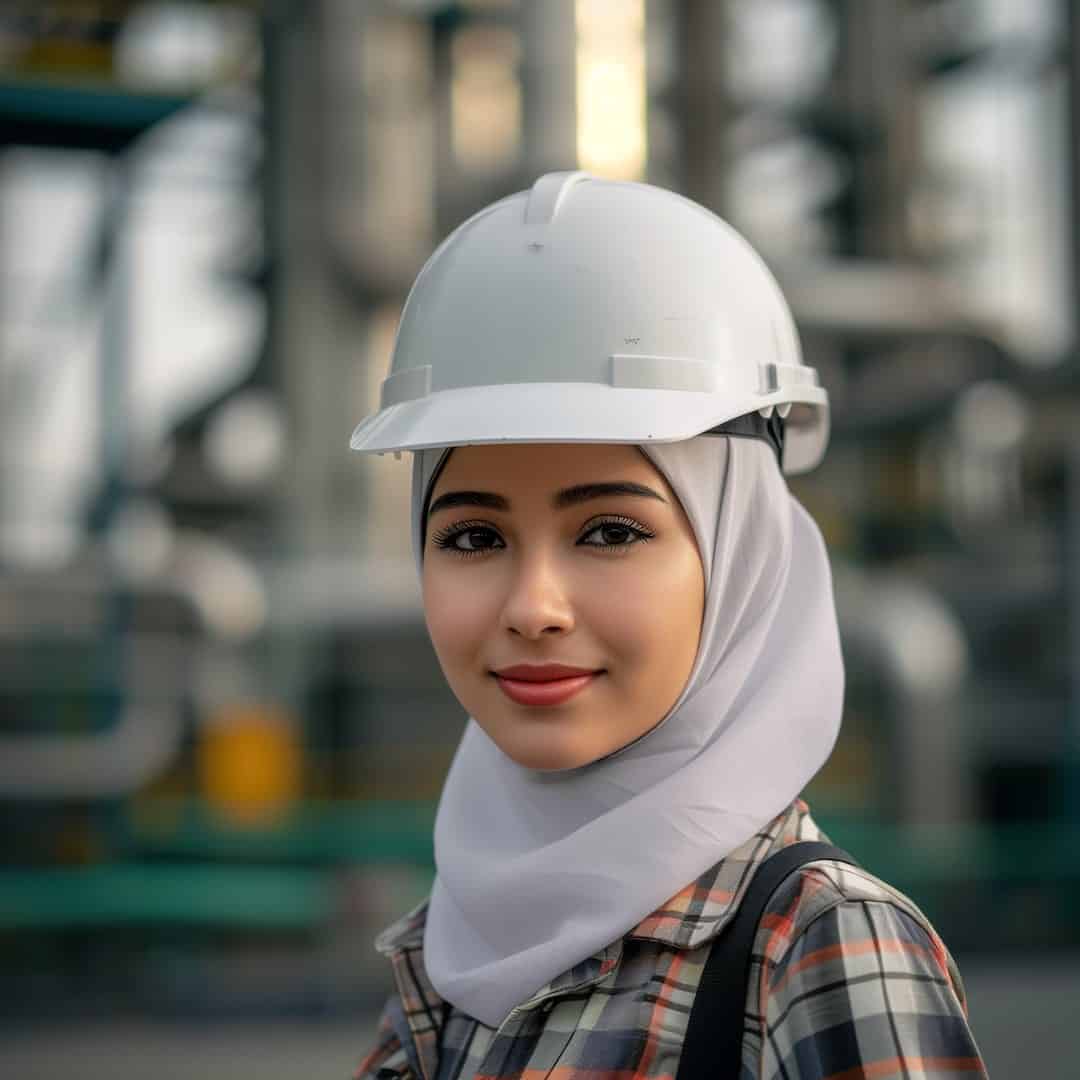
PVC's role in the chlor-alkali value chain
The chlor-alkali industry, integral to modern society, involves a process where table salt is split into caustic soda and chlorine. This industry underpins numerous sectors: caustic soda is crucial for producing alumina and paper, and is essential in water treatment, drinking water purification, cleaning agents, pharmaceuticals, and food processing.
About 30% of the chlorine goes into PVC production. The majority of chlorine aids in water disinfection, manufacturing of around 80% of all pharmaceuticals, and the creation of products ranging from electric car batteries to solar panels and firefighter face shields in polycarbonate (PC). It is important to note that many chemicals, plastics, and medicines use chlorine at some stage in the manufacturing process, although the end product is chlorine free.
In Europe, asbestos and mercury technology to produce chlorine have been legally phased out in Europe since December 2017. The membrane technology employed today is safe and consumes much less energy than the former technologies.
PVC pipes are durable
Durability is key to utility companies and consumers. The first PVC piping systems were installed over 80 years and most of these are still in use. Dig up studies show minimum of degradation and confirm that the pipes have many more years of service left. The expected lifespan of a PVC pipe is 100 years or more for underground pipes. Moreover, PVC pipes consistently show a much lower failure rate than non-plastic materials such as ductile iron, steel, asbestos cement, and cast iron.
PVC pipes are cost-efficient
Comparative studies from several European countries document PVC water and sewer pipes have the lowest Total Cost of Ownership compared to non-plastic materials. This includes the costs to purchase pipes, install, operate and maintain and dismantle the pipeline. 100+ years of service life and low Total Cost of Ownership mean utilities can safely choose PVC for their piping infrastructure.
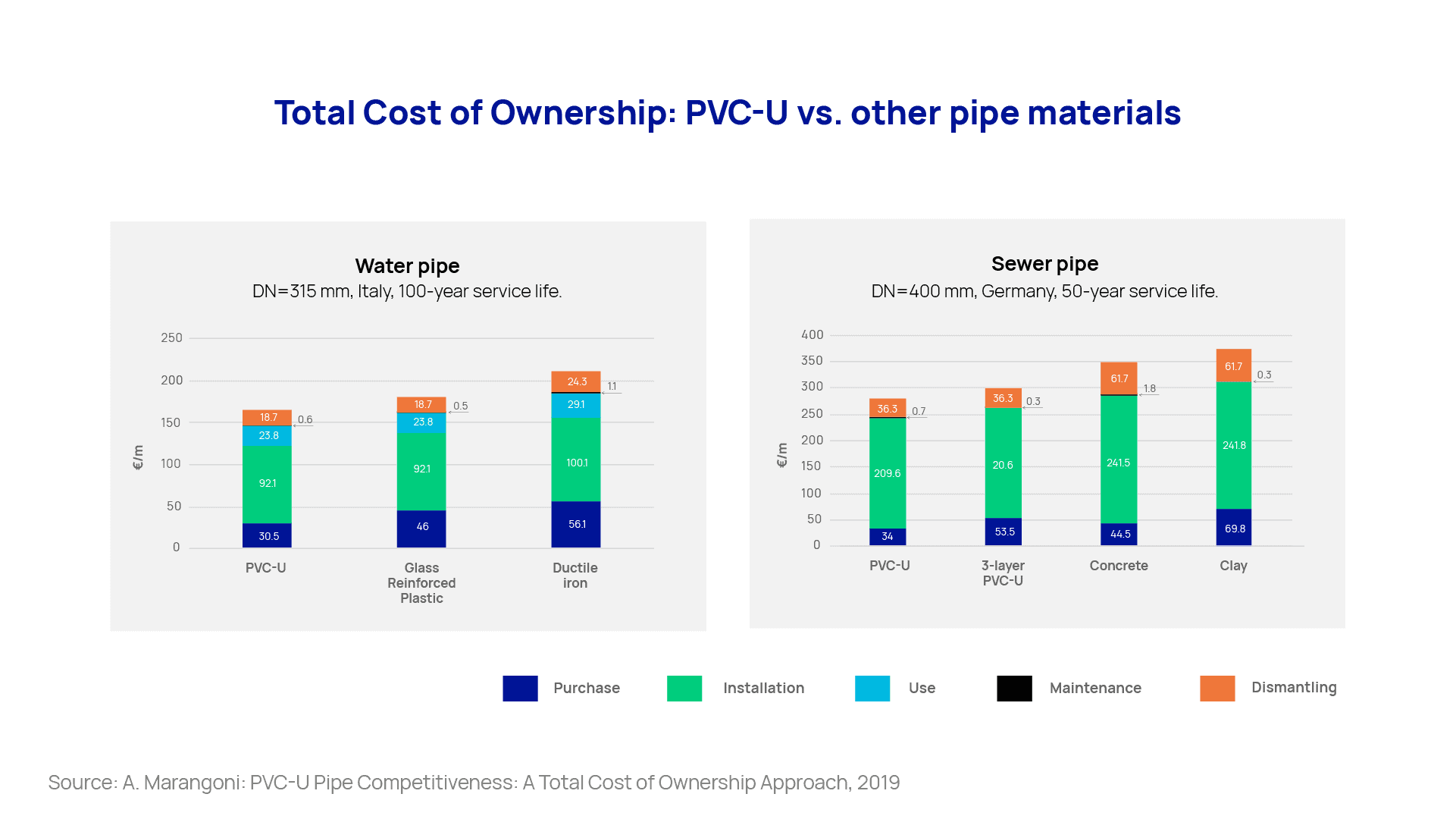
PVC pipes are eco-efficient
Recent peer-reviewed research and comparative Life Cycle Assessments (LCAs) underscore the significant environmental advantages of PVC pipes over traditional materials like ductile iron and concrete, particularly in terms of their carbon footprint. PVC pipes weigh less, which not only requires less energy for production but also minimises the greenhouse gas (GHG) emissions associated with transport and installation.
PVC is inherently a low carbon plastic, made from 57% chlorine derived from common salt. The high chlorine content means it consumes less primary energy than other plastics such as HDPE, LDPE, and PP.
Thanks to innovation and investments, bio-attributed and bio-circular PVC resin and non-fossil additives are available on the market and are already being used in pipes.
Long-lasting, circular, efficient
PVC pipes have a long service life, spanning 100 years or more when buried underground. Their unique molecular structure enables up to 10 cycles of mechanical recycling without significant loss of functional properties. Moreover, the ultra-smooth surface of PVC pipes reduces pumping costs and energy use, and their leak-free fittings eliminate water loss. This is good for both the environment and the utility bill.

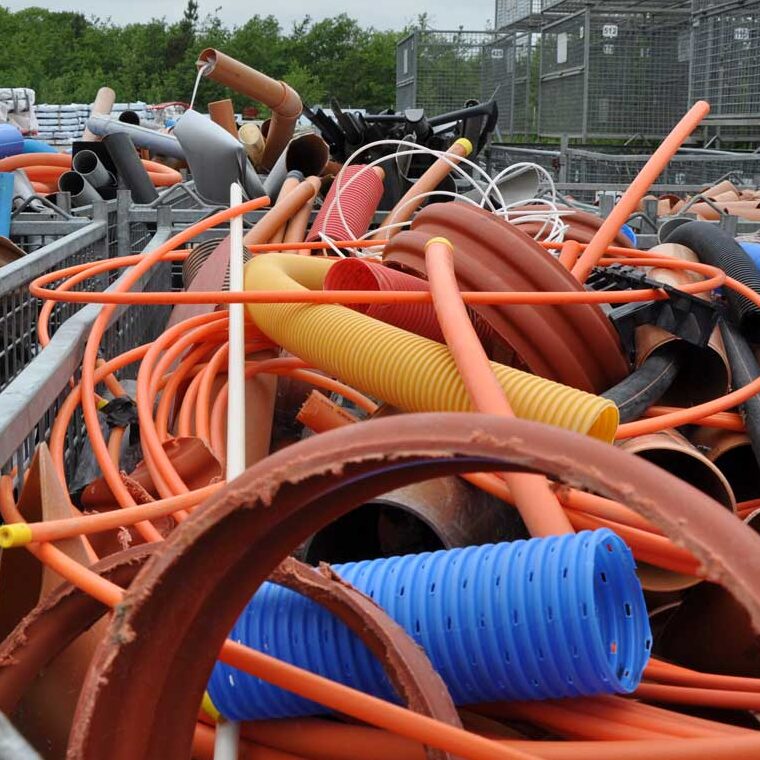
PVC pipes are recyclable and increasingly being recycled
PVC pipes can be recycled several times without losing their technical properties. Each year around 35,000 tonnes of PVC pipes and fittings are recycled in Europe through VinylPlus®. Since 2000, 850,000 tonnes have been recycled. PVC pipes are also a major uptake for recycled PVC in Europe. Traceability and certification schemes for recyclates ensure a high degree of safety and quality for the recycled PVC.
PVC recycling creates jobs and saves energy and resources
Using recycled PVC helps meet resource-efficiency targets and allows the preservation of natural resources. For each kg of PVC recycled, 2 kg of CO2 are saved. On this basis, CO2 savings from PVC recycling in Europe are 16.2 million tonnes since 2000. Recycled PVC’s primary energy demand is up to 90% lower than virgin PVC production. PVC recycling also creates green jobs – the 813,266 tonnes of PVC pipes and other products recycled in Europe in 2022 through VinylPlus contributed to the creation of more than 1,600 direct jobs in recycling plants.
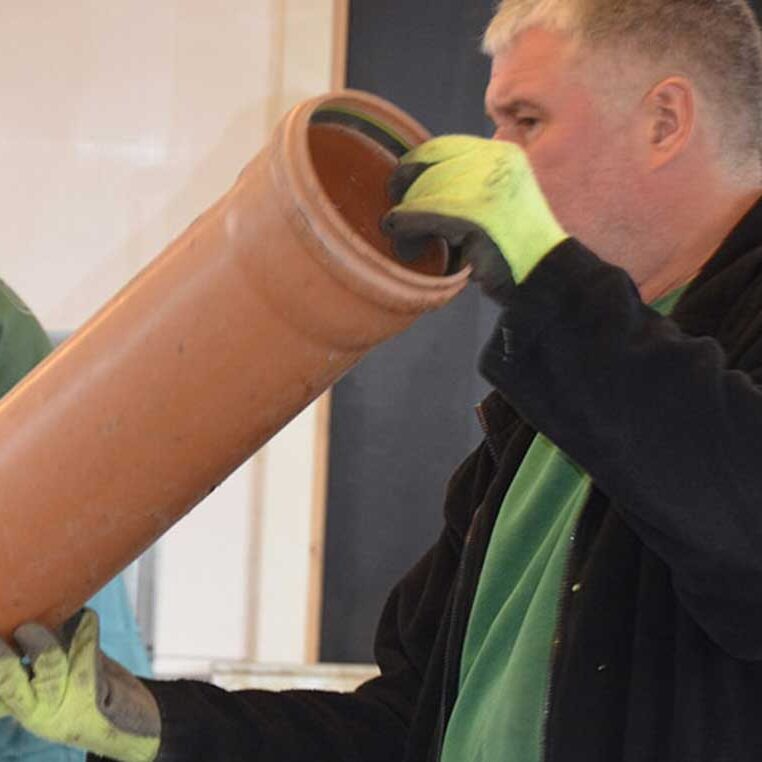
Cost-Benefit Analyses highlight economic benefits of recycling
Plastic recycling not only contributes to creation of green European jobs and resource, energy, and carbon savings. Through the methodology of Cost-Benefit Analysis (CBA), it has been demonstrated that recycling versus incineration or landfilling of PVC pipes yields significant cost benefits. Even as Europe grapples with rising energy costs, the economic rationale for PVC pipe recycling remains compelling.






